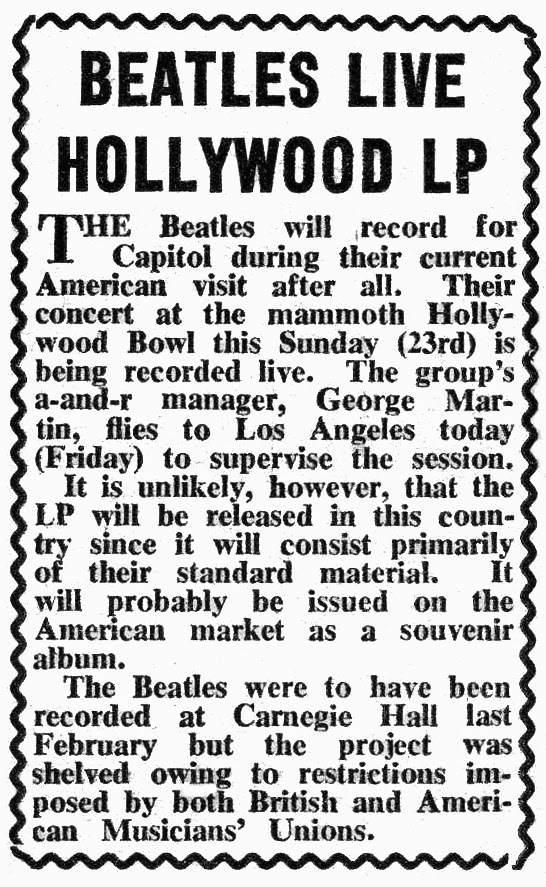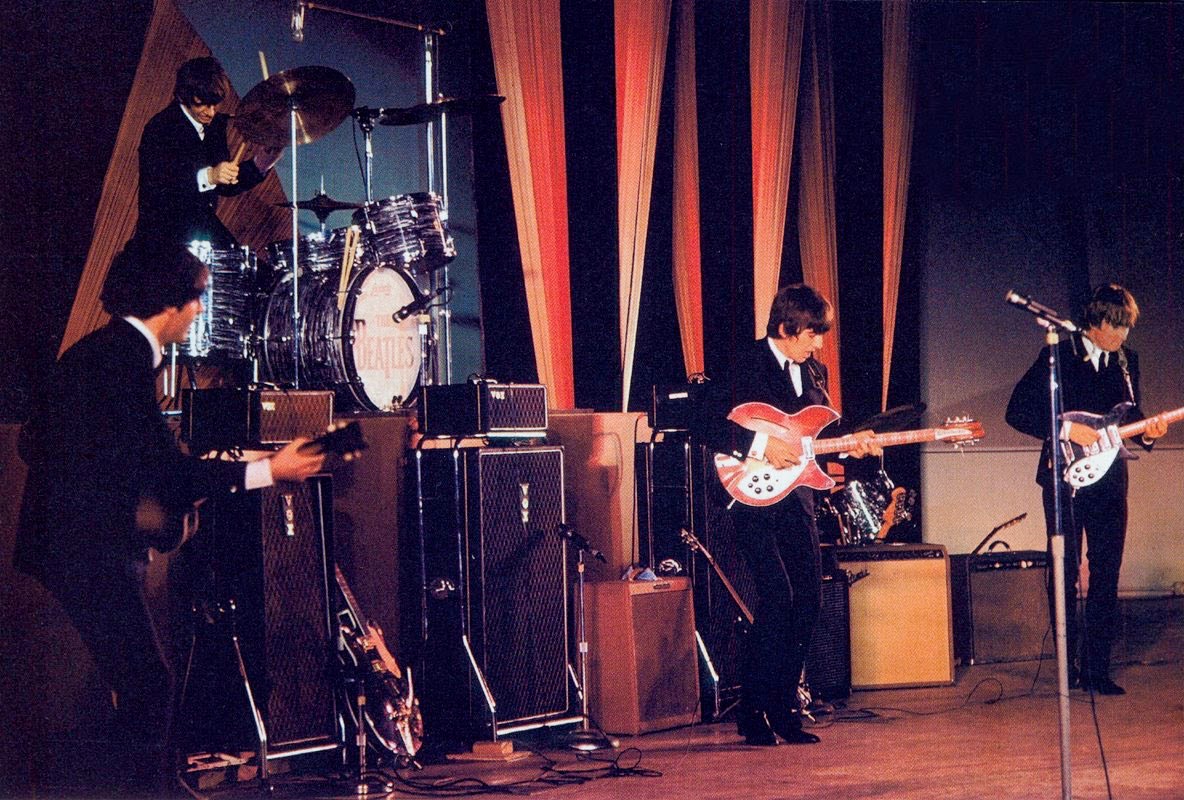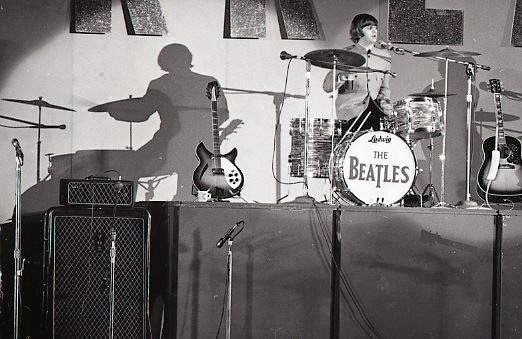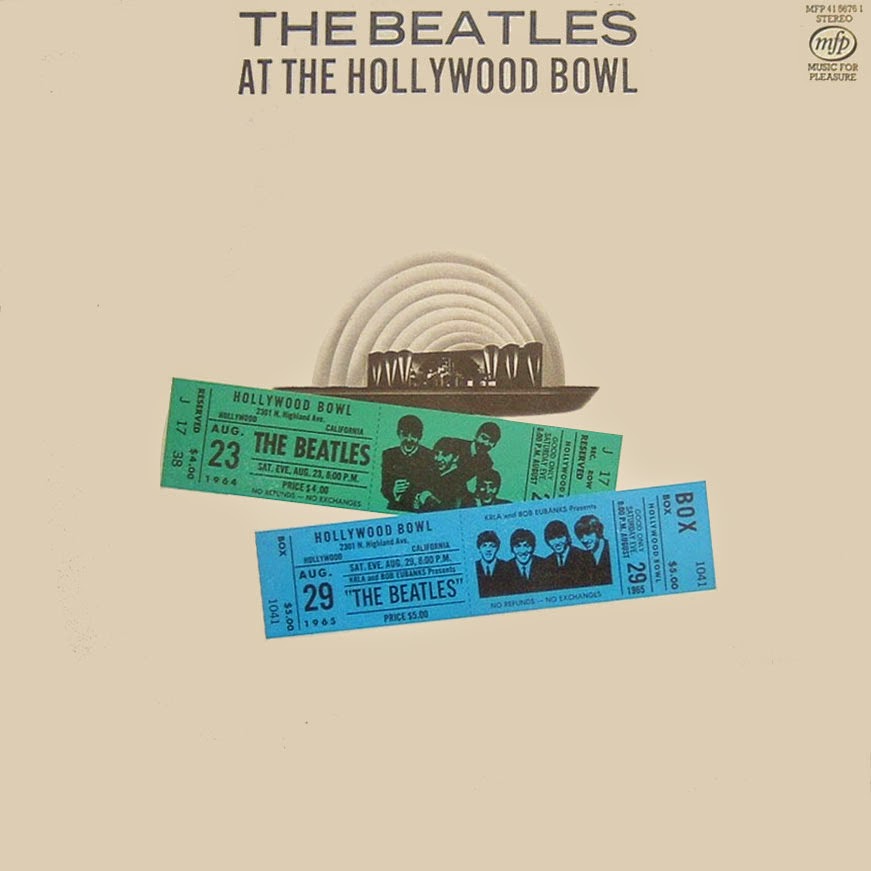 |
| The Beatles At The Hollywood Bowl. Still not out on iTunes or CD, and, perhaps more importantly: not out on Universal Music. |
Initially, Capitol Records considered recording The Beatles' February 1964 concert at Carnegie Hall in New York, but it could not obtain the necessary approval from the AFM to record the performance. Six months later, Bob Eubanks booked The Beatles' 23 August 1964 performance at the Hollywood Bowl in Los Angeles where Capitol recorded their performance with the intent of releasing a live album in America.
 |
| The recordings were no secret, as this cutting from the New Musical Express from two days before the concert shows. |
It's funny that the album was only considered for the American market, due to the fact that "it will consist primarily of their standard material", as the NME put it. Clearly, the mere fact that it was a real live concert performance wasn't enough to impress the British particularly. Although the news item mentions that George Martin had flown over to supervise the recordings, the de facto producer was Capitol's Voyle Gilmore, and Martin was a foreigner who didn't have any influence over how the recordings were done, miked or mixed.
The sound quality of the tapes proved to be inadequate for commercial release, and when The Beatles returned to the Hollywood Bowl a year later during their 1965 American tour, Capitol recorded two performances by the group at the same venue. The sound quality of the 1965 recordings was equally disappointing. Capitol did, however, utilise a 48-second excerpt of "Twist and Shout" from the 1964 Hollywood Bowl concert on the 1964 documentary album, "The Beatles' Story".
In 1971, the Hollywood Bowl tapes were given to Phil Spector to see if he could fashion an album out of the material. Either Spector did not complete the job or his production was unsatisfactory, and the tapes continued to sit unreleased for another six years.
Probably as a reaction to the imminent independent release of the infamous 1962 "Star Club tapes" from Hamburg in 1977, Capitol felt that they had to release something on their own. When George Martin was asked by Capitol Records' president, Bhaskar Menon to listen to the tapes again with an album in mind, he was impressed with the performances, but disappointed with the sound quality, and the fact that vocals and guitars were interlocked on a single track. In working on the three-track Hollywood Bowl concert tapes, Martin discovered quite a challenge. The first difficulty was finding a working three-track machine with which to play back the master tapes. Once he found one, he discovered that the machine overheated when it was running, melting the magnetic tape. Martin and recording engineer Geoff Emerick came up with the solution of blowing cold air from a vacuum cleaner to keep the tape deck cool whilst the recordings were transferred to 16-track tapes (some sources say 24-track tapes, Martin's sleeve notes just uses the phrase multitrack tapes) for filtering, equalisation, editing, and mixing. The album cover mistakenly showed the 29 August recordings as the second date used, but Martin had found the 29 August 1965 recording lacking, as a technical fault left Paul McCartney's vocals and introductions inaudible during the first four songs, and just two songs, "Ticket to Ride" and "Help" from that concert was in fact used. A third song, "Dizzy Miss Lizzy" is a composite using parts from both nights in 1965. Otherwise, the album compiled by Martin consisted entirely of songs recorded on 23 August 1964 and 30 August 1965.
 |
| Hollywood Bowl 1964 |
"George Martin made such a speech. It sounds like he changed it but I doubt it. There's not much he could do. It was recorded on three-track machines with half-inch tapes. The Hollywood Bowl has a pretty good stereo sound system so we plugged our mikes right in there. I didn't do an awful lot. There wasn't much we could do. They just played their usual show and we recorded it. It wasn't that bad. I kept thinking, 'Maybe we'll get permission to release the tapes.' So I took them back to the studio and worked on it a while. I worked on the applause, edited it down, made it play and EQd it quite a bit. The Beatles heard it and they all wanted tape copies. I had five or six copies made and sent over. That's where the bootlegs must have come from. We had a system at Capitol and we knew where all our copies were. The Beatles said they liked the tapes, that it sounded pretty good, that they were surprised but they still didn't want to release it. I thought the first concert was a little better than the second. I don't know if I would have put them together like they did because doing it that way they have sacrificed an album. They really could have made two albums."
Martin counteracted that "We recorded it on three-track tape, which was standard US format then. You would record the band in stereo on two tracks and keep the voice separated on the third, so that you could bring it up or down in the mix. But at the Hollywood Bowl they didn't use three-track in quite the right way. I didn't have too much say in things because I was a foreigner, but they did some very bizarre mixing. In 1977, when I was asked to make an album from the tapes, I found guitars and voices mixed on the same track. And the recording seemed to concentrate more on the wild screaming of 18,700 kids than on the Beatles on stage."
Martin's comment is from Mark Lewisohn's book, "The Complete Beatles Recording Sessions".
 |
| Hollywood Bowl 1965 |
 |
| Hollywood Bowl 1965 |
"Twist and Shout", "You Can't Do That", "Can't Buy Me Love", "If I Fell", "I Want to Hold Your Hand", and "A Hard Day's Night".
Songs from the 1965 show not included on the album are:
"I Feel Fine", "Everybody's Trying to Be My Baby", "Baby's in Black", "I Wanna Be Your Man", and "I'm Down".
They still had to get approval from the four Beatles in order to release the album. Paul seems to have approved it without hearing it, John was given a tape from George Martin and was delighted, Ringo and George were more lukewarm to it, George likening it to a bootleg, albeit an official one.
The album was released in May 1977, in the middle of the punk rock and disco era, but still sold over a million copies worldwide, topping the NME chart in the UK, and stopping at the no. 2 spot on the Billboard chart in the USA.
 |
| 1984 re-release. |
"Baby's in Black" from the 1965 Hollywood Bowl concert was finally issued as the B-Side of the 1996 "Real Love" single, splicing together John's spoken introduction from the 29th of August followed by the performance of the song from the 30th.
"I Want to Hold Your Hand" from the 1964 concert was mixed into the studio version of the song for the 2006 Love album.
With "The Beatles Live Project" due out later this year (rumours have it that it will be realised for the Christmas market), an offspring of the project could well be a remastered, remixed and improved "The Beatles at the Hollywood Bowl". Certainly the stereo audio from these professionally recorded concerts would be of good use in the Ron Howard produced documentary.